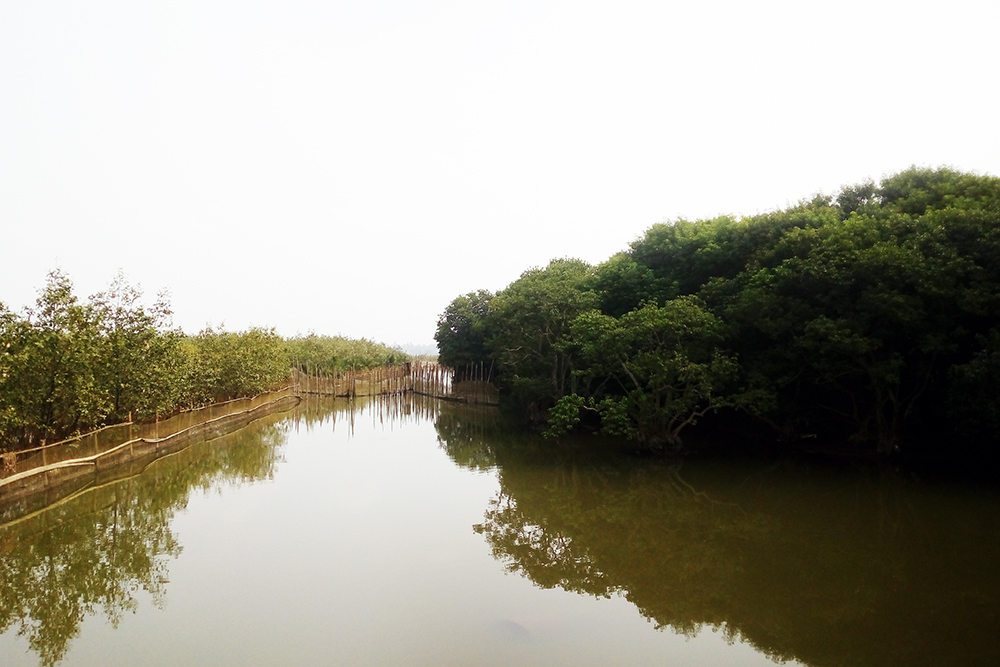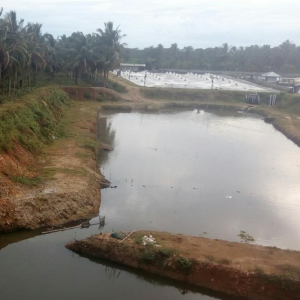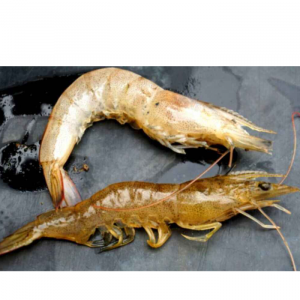
Technology of Intercropping Tiger Shrimp - Crab - Mullet in Mangrove Forests
| Fri, 05 Feb 2021 - 17:13
Among the models that can be developed in mangrove forests, the model of intercropping with many objects such as shrimp, crab, and fish is a suitable model and brings economic and ecological efficiency.

In order to help aquaculturists have more knowledge of the following mangrove farming techniques, I would like to introduce the techniques of raising giant tiger shrimp, crab and mullet in the mangrove forest.
Also read: Aquamimicry: A revolutionary concept for shrimp farming
1. Select and prepare farming areas
The farming area is located in an area with mangrove plantations.
Use a form of flute barrier farming to crank the farming area (using a net and bamboo poles to carefully fence the farming area).
Best farming area is 10,000 - 20,000 m 2 .
In the culture area, there are ditch systems 1 - 1.2 m deep for shelter of shrimp, crabs and fish. Water changes are based entirely on the tide.
- Check and repair the bamboo poles or renew them if they are too old.
- For farming areas that can retain water, kill all trash fish and shrimp using saponins or cool seeds.
- For completely open farming areas, all shrimps, crabs and fish of the old crop will be captured by manual methods.
- Conduct liming with volume 7 kg / 100m 2 for farming.
-Check the environmental factors if appropriate, conduct stocking
2. Selection and stocking
Healthy fish are of all sizes, no scratches (flakes), fast activity, bright colors, no deformities, defects. Size:
Density of polyculture: (main object is tiger shrimp)
+ Tiger shrimp: 2 / m 2 , size 3 - 5 cm / unit
+ Mullet: 1 fish / 10 m 2 , size 4-6 cm / fish
+ Crab: 1/10 m 2 , size 3 - 5cm / piece
- Method of stocking:
+ Should stock in the early morning or cool afternoon, should not stock when it rains or northeast monsoon.
+ Before releasing the seed bags in the pond (when transporting sealed) 10-15 minutes to balance the temperature, then open the bag to add water slowly and then release the fingerlings to the pond. For stocking crabs, add a little water to cover the sand in the crab tray, leave for about 5-10 minutes, then tilt the tray and spread the crabs over the pond. Do not focus on stocking one point, to limit crabs eating each other when molting.
Also read: Evaluating Plant Protein Sources Replacing Fishmeal In Juvenile White Shrimp Diets
3. Care management
3.1. Food and feeding method
- Food
+ Mullet: Use industrial floating pellets for fish (food with protein 28-30%).
+ Crab, tiger shrimp: Use industrial food with protein> 30%.
+ In addition, farmers can take advantage of additional sources of trash fish and agricultural by-products to process food for the cultured species.
- The amount of daily feed 2 - 4% of the total weight of the herd. Only give food to partially supplement the demand for shrimp, crab, and fish, and the farmers will take advantage of natural food sources in the mangrove forest.
- How to feed:
+ Food for shrimp and crab is spread evenly in the pond, 1-2 times / day.
+ For mullet fish, it is necessary to arrange a frame so that the fish can eat together, more in the morning than in the evening. When feeding fish, it is necessary to create reflexes for the fish by creating noises for the fish to concentrate. Feeding 1-2 times / day.
* Feeding according to the principle of 3 viewing, 4 concentration
3 view: see the weather weather, see the water color, see the health status of the fish.
4: quantitative, qualitative, timing and location.
Some points to note when feeding:
- Food must ensure quality and quantity.
- Feeding 1-2 times a day and fixed feeding place and time.
- Increase the amount of food when we see the amount of food taken into the fish quickly eaten or to reduce the amount of food when we see the excess of the previous day.
- Feed the fish a lot on a good weather day and feed the fish less on a bad weather day or before rain.
Also read: Ice Water Treatment Impacts on Peeling Time, Meat Quality of Pacific White Shrimp
3.2. Farming area management
- Regularly check the net system, bamboo poles for timely repair to avoid loss of shrimp, crab and fish.
- Water change depends on the tide.
- Periodic liming liming 10-15 days with the amount of 1-2 kg / 100m 2
- Every 10 -15 days check the weight of farmed crabs and fish to adjust the amount of food accordingly.
- Ensure the water level in the ditches is 1 - 1.2m deep.
- Do not cut down or take other actions that affect the mangrove forest.
4. Harvest
- After 3-4 months of farming, shrimp can be harvested with the size of 45 heads / kg, crabs reach the size of 4 / kg, then harvest and trim.
- The mullet after 5 - 6 months of culture reaching the commercial size of 3 fish / kg, we proceed to harvest.
- Collect shrimps, crabs and fish in the form of pruning shrimps, crabs, and big fish and continue rearing shrimp, crabs, and small fish.
- Can carry out harvesting, pruning and adding more seeds to have products all year round.
- Collect all cultured species before the rainy season.
Harvesting fish should be paid attention to avoid bleeding in the skin:
+ Immediately put fish in cold ice after harvesting
+ Unsold fish should be kept in the feet (cage) and submerged in water.
Source: Tepbac.com






















